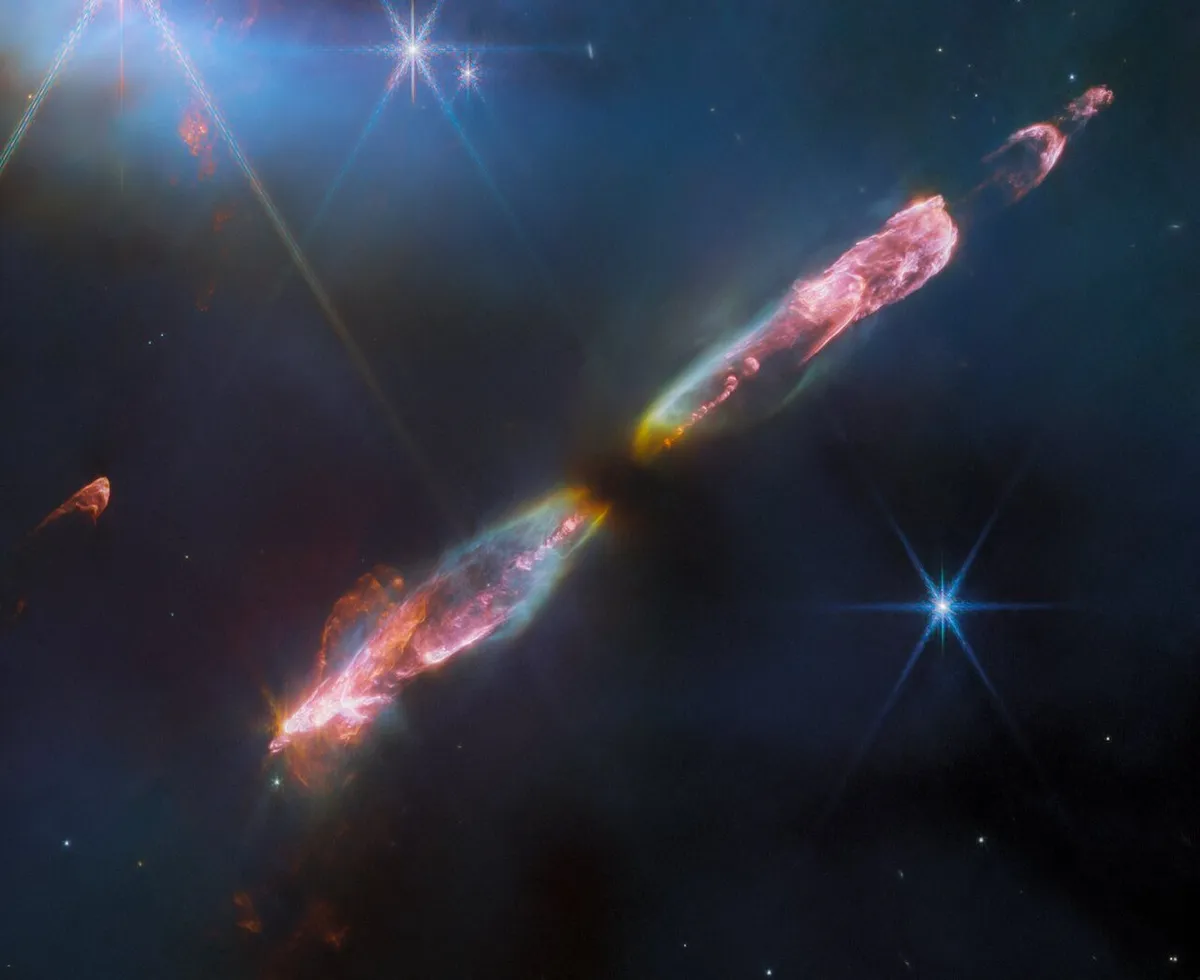The James Webb Space Telescope has captured a spectacular image of energetic jets erupting from a newborn star 1,000 lightyears away.
The image shows jets of gas hurtling away from the star, colliding with nearby cosmic gas and producing shockwaves.
The object in question is Herbig-Haro 211 (HH 211), found in the constellation Perseus.
It is one of the youngest and nearest known protostellar outflows.

What is a Herbig-Haro object?
Herbig Haro objects are luminous regions found around newborn stars, generated when stellar winds (streams of charged particles) or jets of gas flow outwards at supersonic speeds.
The star is a Class 0 protostar, which means it is similar to what our Sun was like when it was just a few tens of thousands of years old.
It has a mass around 8% of our present-day Sun, but will eventually grow into a star similar to the Sun.
The science behind the image
The Webb Telescope observes the cosmos in infrared, making it well-suited for studying newborn stars.
This is because very young stars are still surrounded by the cosmic dust out of which they were born.
Optical light would not be able to penetrate this dust, but Webb's infrared vision can, getting a better look at the star's outflows.
Webb has picked up a sort of symmetrical 'wiggle' seen in both jets, which could mean the young protostar is actually a binary star.
The team behind this new study found that the innermost outflow is moving at speeds of around 80 - 100 km per second.
Read the full paper at www.nature.com/articles/s41586-023-06551-1

